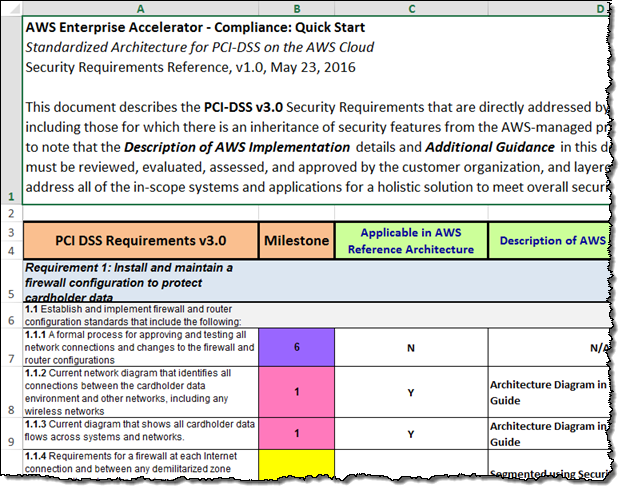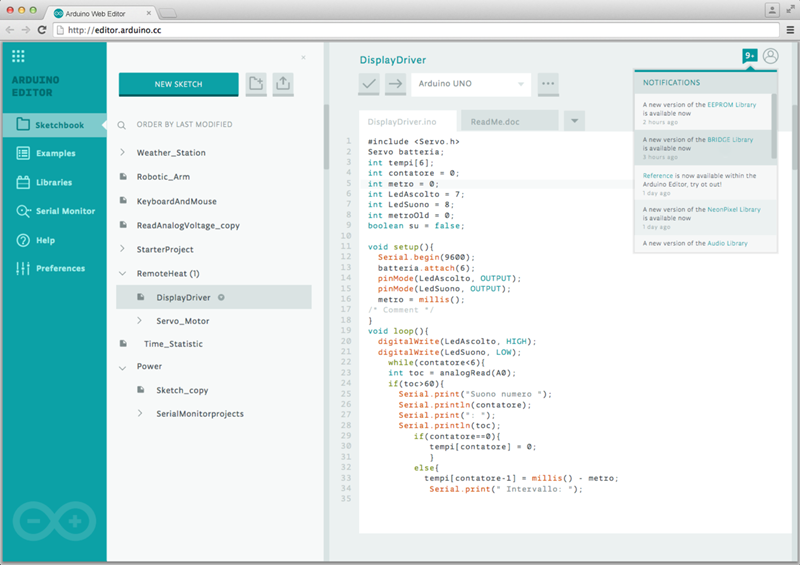Tuesday, May 31, 2016
You Can Now Try Alexa on Your Browser
Monday, May 30, 2016
Get Your Home Summer-Ready with Amazon's Patio, Lawn & Garden Deals
Sunday, May 29, 2016
An Echo-like Apple Device?
Friday, May 27, 2016
Get Up to $140 Gift Card When You Purchase a Sonos Speaker
No More Price Matching Refunds for Your Amazon Purchases
Thursday, May 26, 2016
Amazon Elastic Transcoder Update – Support for MPEG-DASH
Amazon Elastic Transcoder converts media files (audio and video) from one format to another. The service is robust, scalable, cost-effective, and easy to use. You simply create a processing pipeline (pointing to a pair of S3 buckets for input and output in the process), and then create transcoding jobs. Each job reads a specific file from the input bucket, transcodes it to the desired format(s) as specified in the job, and then writes the output to the output bucket. You pay for only what you transcode, with price points for Standard Definition (SD) video, High Definition (HD) video, and audio. We launched the service with support for an initial set of transcoding presets (combinations of output formats and relevant settings). Over time, in response to customer demand and changes in encoding technologies, we have added additional presets and formats. For example, we added support for the VP9 Codec earlier this year.
Support for MPEG-DASH
Today we are adding support for transcoding to the MPEG-DASH format. This International Standard format supports high-quality audio and video streaming from HTTP servers, and has the ability to adapt to changes in available network throughput using a technique known as adaptive streaming. It was designed to work well across multiple platforms and at multiple bitrates, simplifying the transcoding process and sidestepping the need to create output in multiple formats.
During the MPEG-DASH transcoding process, the content is transcoded into segmented outputs at the different bitrates and a playlist is created that references these outputs. The client (most often a video player) downloads the playlist to initiate playback. Then it monitors the effective network bandwidth and latency, requests video segments as needed. If network conditions change during the playback process, the player will take action, upshifting or downshifting as needed.
You can serve up the transcoded content directly from S3 or you can use Amazon CloudFront to get the content even closer to your users. Either way, you need to create a CORS policy that looks like this:
*
GET
3000
*
If you are using CloudFront, you need to enable the OPTIONS method, and allow it to be cached:

You also need to add three headers to the whitelist for the distribution:

Transcoding With MPEG-DASH
To make use of the adaptive bitrate feature of MPEG-DASH, you create a single transcoding job and specify multiple outputs, each with a different preset. Here are your choices (4 for video and 1 for audio):
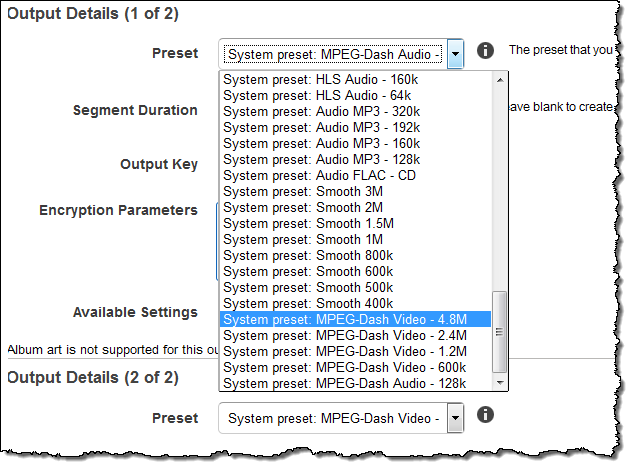
When you use this format, you also need to choose a suitable segment duration (in seconds). A shorter duration produces a larger number of smaller segments and allows the client to adapt to changes more quickly.
You can create a single playlist that contains all of the bitrates, or you can choose the bitrates that are most appropriate for your customers and your content. You can also create your own presets, using an existing one as a starting point:
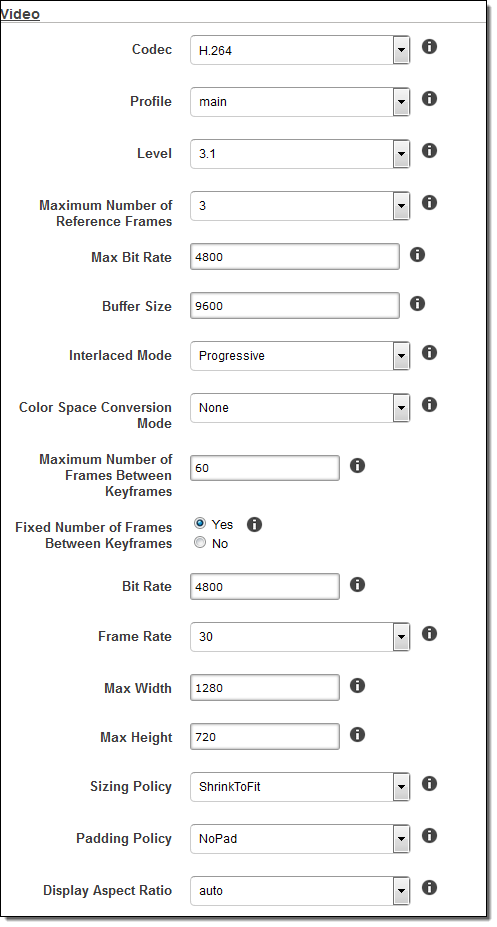
Available Now
MPEG-DASH support is available now in all Regions where Amazon Elastic Transcoder is available. There is no extra charge for this use of this format (see Elastic Transcoder Pricing to learn more).
Jeff;
Monday, May 23, 2016
New AWS Quick Start Reference Deployment – Standardized Architecture for PCI DSS
If you build an application that processes credit card data, you need to conform to PCI DSS (Payment Card Industry Data Security Standard). Adherence to the standard means that you need to meet control objectives for your network, protect cardholder data, implement strong access controls, and more.
In order to help AWS customers to build systems that conform to PCI DSS, we are releasing a new Quick Start Reference Deployment. The new Standardized Architecture for PCI DSS on the AWS Cloud (PDF or HTML) includes a AWS CloudFormation template that deploys a standardized environment that falls in scope for PCI DSS compliance (version 3.1).
The template describes a stack that deploys a multi-tiered Linux-based web application in about 30 minutes. It makes use of child templates, and can be customized as desired. It launches a pair of Virtual Private Clouds (Management and Production) and can accommodate a third VPC for development: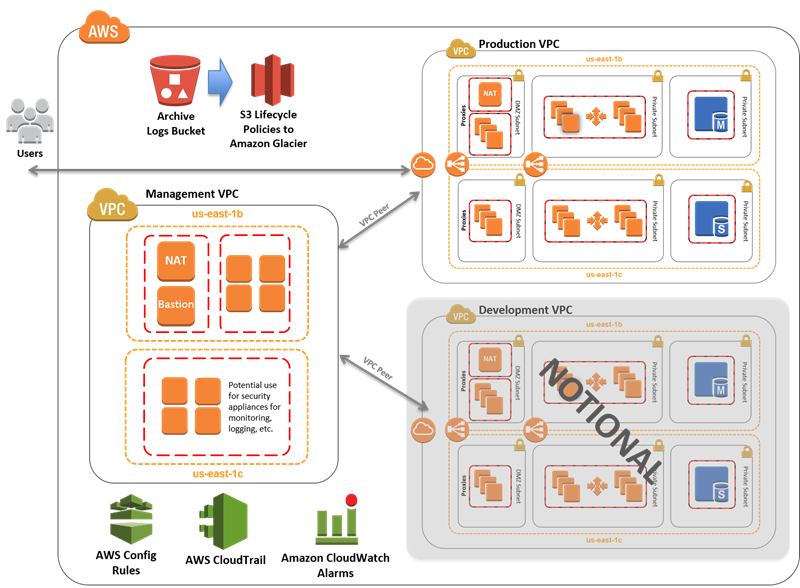
The template sets up the IAM items (policies, groups, roles, and instance profiles), S3 buckets (encrypted web content, logging, and backup), a Bastion host for troubleshooting and administration, an encrypted RDS database instance running in multiple Availability Zones, and a logging / monitoring / alerting package that makes use of AWS CloudTrail, Amazon CloudWatch, and AWS Config Rules. The architecture supports a wide variety of AWS best practices (all of which are detailed in the document) including use of multiple Availability Zones, isolation using public and private subnets, load balancing, auto scaling, and more.
You can use the template to set up an environment that you can use for learning, as a prototype, or as the basis for your own template.
The Quick Start also includes a Security Controls Reference. This document maps the security controls called out by PCI DSS to the relevant architecture decisions, features, and configurations.
-
Jeff;
PS – Check out our other AWS Enterprise Accelerator Quick Starts!
Discounted Kindle and Fire Tablets for your Kids. Limited Time Only!
Sunday, May 22, 2016
Get 20% off on Women's Swimwear!
Friday, May 20, 2016
Arduino Web Editor and Cloud Platform – Powered by AWS
Last night I spoke with Luca Cipriani from Arduino to learn more about the new AWS-powered Arduino Web Editor and Arduino Cloud Platform offerings. Luca was en-route to the Bay Area Maker Faire and we had just a few minutes to speak, but that was enough time for me to learn a bit about what they have built.
If you have ever used an Arduino, you know that there are several steps involved. First you need to connect the board to your PC's serial port using a special cable (you can also use Wi-Fi if you have the appropriate add-on “shield”), ensure that the port is properly configured, and establish basic communication. Then you need to install, configure, and launch your development environment, make sure that it can talk to your Arduino, tell it which make and model of Arduino that you are using, and select the libraries that you want to call from your code. With all of that taken care of, you are ready to write code, compile it, and then download it to the board for debugging and testing.
Arduino Code Editor
Luca told me that the Arduino Code Editor was designed to simplify and streamline the setup and development process. The editor runs within your browser and is hosted on AWS (although we did not have time to get in to the details, I understand that they made good use of AWS Lambda and several other AWS services).
You can write and modify your code, save it to the cloud and optionally share it with your colleagues and/or friends. The editor can also detect your board (using a small native plugin) and configure itself accordingly; it even makes sure that you can only write code using libraries that are compatible with your board. All of your code is compiled in the cloud and then downloaded to your board for execution.
Here's what the editor looks like (see Sneak Peek on the New, Web-Based Arduino Create for more):
Arduino Cloud Platform
 Because Arduinos are small, easy to program, and consume very little power, they work well in IoT (Internet of Things) applications. Even better, it is easy to connect them to all sorts of sensors, displays, and actuators so that they can collect data and effect changes.
Because Arduinos are small, easy to program, and consume very little power, they work well in IoT (Internet of Things) applications. Even better, it is easy to connect them to all sorts of sensors, displays, and actuators so that they can collect data and effect changes.
The new Arduino Cloud Platform is designed to simplify the task of building IoT applications that make use of Arduino technology. Connected devices will be able to be able to connect to the Internet, upload information derived from sensors, and effect changes upon command from the cloud. Building upon the functionality provided by AWS IoT, this new platform will allow devices to communicate with the Internet and with each other. While the final details are still under wraps, I believe that this will pave the wave for sensors to activate Lambda functions and for Lambda functions to take control of displays and actuators.
I look forward to learning more about this platform as the details become available!
-Jeff;
AWS Accelerator for Citrix – Migrate or Deploy XenApp & XenDesktop to the Cloud
If you are running Citrix XenApp, XenDesktop and/or NetScaler on-premises and are interested in moving to the AWS Cloud, I have a really interesting offer for you!
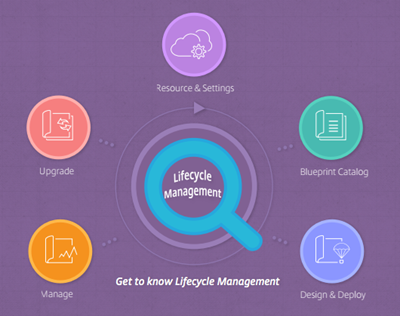 In cooperation with our friends at Citrix (an Advanced APN Technology Partner), we have assembled an AWS Accelerator to help you to plan and execute a successful trial migration while using your existing licenses. The migration process makes use of the new Citrix Lifecycle Management (CLM) tool. CLM includes a set of proven migration blueprints that will help you to move your existing deployment to AWS. You can also deploy the XenApp and XenDesktop Service using Citrix Cloud, and tap CLM to manage your AWS-based resources.
In cooperation with our friends at Citrix (an Advanced APN Technology Partner), we have assembled an AWS Accelerator to help you to plan and execute a successful trial migration while using your existing licenses. The migration process makes use of the new Citrix Lifecycle Management (CLM) tool. CLM includes a set of proven migration blueprints that will help you to move your existing deployment to AWS. You can also deploy the XenApp and XenDesktop Service using Citrix Cloud, and tap CLM to manage your AWS-based resources.
Here's the Deal
The AWS Accelerator lets you conduct a 25-user trial migration / proof of concept over a 60 day period. During that time you can use CLM to deploy XenApp, XenDesktop, and NetScaler on AWS per the reference architecture and a set of best practices. We will provide you with AWS Credit ($5000) and Citrix will provide you with access to CLM. A select group of joint AWS and Citrix launch partners will deliver the trials with the backing and support of technical and services teams from both companies.
Getting Started
Here's what you need to do to get started:
- Contact your AWS (email us) or Citrix account team and ask to join the AWS Accelerator.
- Submit your request in order to be considered for Amazon EC2 credits and a trial of Citrix CLM.
- Create an AWS account if you don't already have one.
After you do this, follow the steps in the Citrix blueprint (Deploy the XenApp and XenDesktop Proof of Concept blueprint with NetScaler to AWS) to build your proof-of-concept environment.
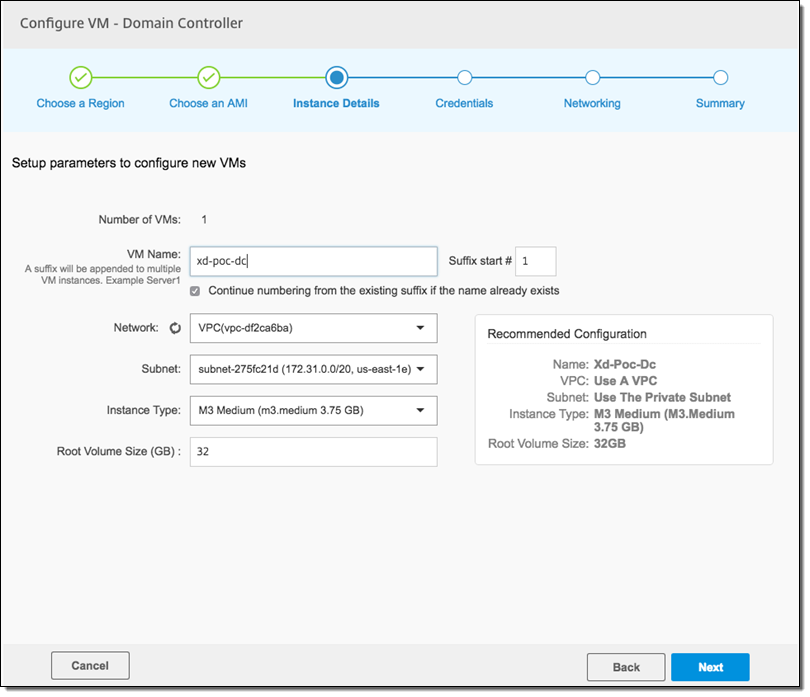
Multiple AWS Partners are ready, willing, and able to help you to work through the blueprint and to help you to tailor it to the needs of your organization. The AWS Accelerator Launch Services Partners include Accenture, Booz Allen Hamilton, CloudNation, Cloudreach, Connectria, Equinix (EPS Cloud), REAN Cloud, and SSI-Net. Our Launch Direct Connect partner is Level 3.
Learn More at Synergy
AWS will be sponsoring Citrix Synergy next week in Las Vegas and will be at booth #770. Citrix will also be teaching a hands on lab (SYN618) based on the AWS Accelerator program on Monday May 23rd at 8 AM. If you are interested in learning more please sign up for the hands on lab or stop by the booth and say hello to my colleagues!
Jeff;
Thursday, May 19, 2016
Amazon Deals for Your Favorite Handyman. Until June 19 only!
Wednesday, May 18, 2016
New – Cross-Account Snapshot Sharing for Amazon Aurora
Amazon Aurora is a high-performance, MySQL-compatible database engine. Aurora combines the speed and availability of high-end commercial databases with the simplicity and cost-effective of open source databases (see my post, Amazon Aurora – New Cost-Effective MySQL-Compatible Database Engine for Amazon RDS, to learn more). Aurora shares some important attributes with the other database engines that are available for Amazon RDS including easy administration, push-button scalability, speed, security, and cost-effectiveness.
You can create a snapshot backup of an Aurora cluster with just a couple of clicks. After you have created a snapshot, you can use it to restore your database, once again with a couple of clicks.
Share Snapshots
Today we are giving you the ability to share your Aurora snapshots. You can share them with other AWS accounts and you can also make them public. These snapshots can be used to restore the database to an Aurora instance running in a separate AWS account in the same Region as the snapshot.
There are several primary use cases for snapshot sharing:
Separation of Environments – Many AWS customers use separate AWS accounts for their development, test, staging, and production environments. You can share snapshots between these accounts as needed. For example, you can generate the initial database in your staging environment, snapshot it, share the snapshot with your production account, and then use it to create your production database. Or, should you encounter an issue with your production code or queries, you can create a snapshot of your production database and then share it with your test account for debugging and remediation.
Partnering – You can share database snapshots with selected partners on an as-needed basis.
Data Dissemination -If you are running a research project, you can generate snapshots and then share them publicly. Interested parties can then create their own Aurora databases using the snapshots, using your work and your data as a starting point.
To share a snapshot, simply select it in the RDS Console and click on Share Snapshot. Then enter the target AWS account (or click on Public to share the snapshot publicly) and click on Add:
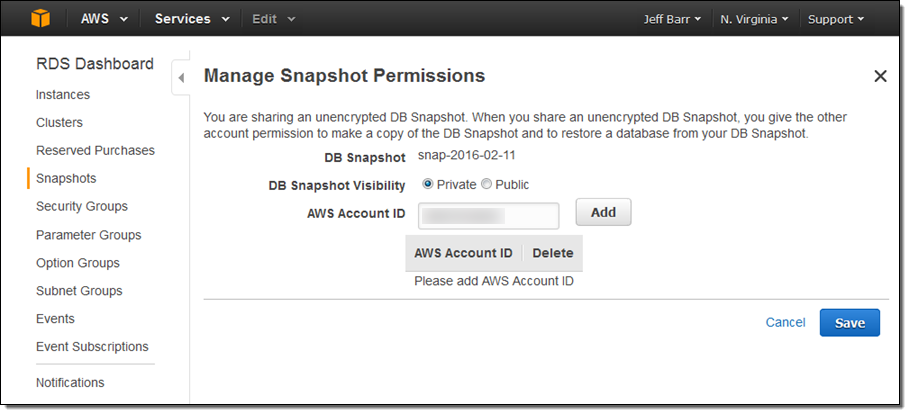
You can share manually generated, unencrypted snapshots with other AWS accounts or publicly. You cannot share automatic snapshots or encrypted snapshots.
The shared snapshot becomes visible in the other account right away:
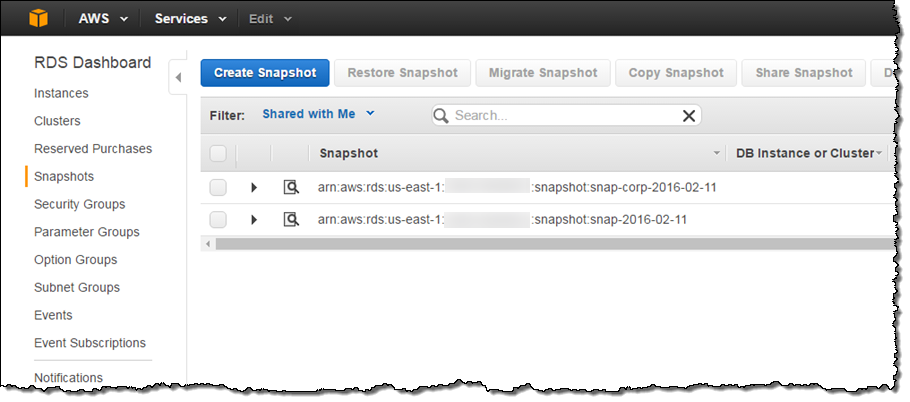
Public snapshots are also visible (select All Public Snapshots as the Filter):
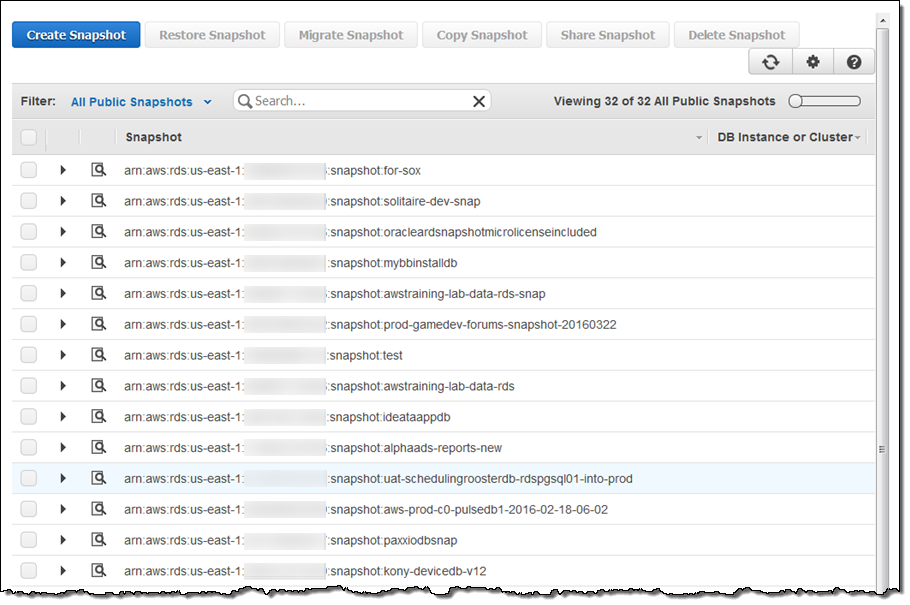
Available Now
This feature is available now and you can start using it today.
Jeff;
A Tablet-Like Alexa Device?
Tuesday, May 17, 2016
I Love My Amazon WorkSpace!
Early last year my colleague Steve Mueller stopped by my office to tell me about an internal pilot program that he thought would be of interest to me. He explained that they were getting ready to run Amazon WorkSpaces on the Amazon network and offered to get me on the waiting list. Of course, being someone that likes to live on the bleeding edge, I accepted his offer.
Getting Started
Shortly thereafter I started to run the WorkSpaces client on my office desktop, a fairly well-equipped PC with two screens and plenty of memory. At that time I used the desktop during the working day and a separate laptop when I was traveling or working from home. Even though I used Amazon WorkDocs to share my files between the two environments, switching between them caused some friction. I had distinct sets of browser tabs, bookmarks, and the like. No matter how much I tried, I could never manage to keep the configurations of my productivity apps in sync across the environments.
After using the WorkSpace at the office for a couple of weeks, I realized that it was just as fast and responsive as my desktop. Over that time, I made the WorkSpace into my principal working environment and slowly severed my ties to my once trusty desktop.
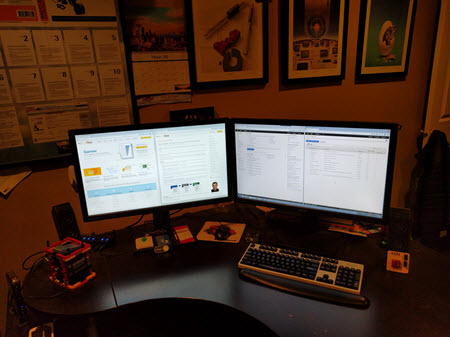 I work from home two or three days per week. My home desktop has two large screens, lots of memory, a top-notch mechanical keyboard, and runs Ubuntu Linux. I run VirtualBox and Windows 7 on top of Linux. In other words, I have a fast, pixel-rich environment.
I work from home two or three days per week. My home desktop has two large screens, lots of memory, a top-notch mechanical keyboard, and runs Ubuntu Linux. I run VirtualBox and Windows 7 on top of Linux. In other words, I have a fast, pixel-rich environment.
Once I was comfortable with my office WorkSpace, I installed the client at home and started using it there. This was a giant leap forward and a great light bulb moment for me. I was now able to use my fast, pixel-rich home environment to access my working environment.
At this point you are probably thinking that the combination of client virtualization and server virtualization must be slow, laggy, or less responsive than a local device. That's just not true! I am an incredibly demanding user. I pound on the keyboard at a rapid-fire clip, I keep tons of windows open, alt-tab between them like a ferret, and I am absolutely intolerant of systems that get in my way. My WorkSpace is fast and responsive and makes me even more productive.
Move to Zero Client
A few months in to my WorkSpaces journey, Steve IM'ed me to talked about his plan to make some Zero Client devices available to members of the pilot program. I liked what he told me and I agreed to participate. He and his sidekick Michael Garza set me up with a Dell Zero Client and two shiny new monitors that had been taking up space under Steve's desk. At this point my office desktop had no further value to me. I unplugged it, saluted it for its meritorious service, and carried it over to the hardware return shelf in our copy room. I was now all-in, and totally dependent on, my WorkSpace and my Zero Client.
The Zero Client is a small, quiet device. It has no fans and no internal storage. It simply connects to the local peripherals (displays, keyboard, mouse, speakers, and audio headset) and to the network. It produces little heat and draws far less power than a full desktop.
During this time I was also doing quite a bit of domestic and international travel. I began to log in to my WorkSpace from the road. Once I did this, I realized that I now had something really cool-a single, unified working environment that spanned my office, my home, and my laptop. I had one set of files and one set of apps and I could get to them from any of my devices. I now have a portable desktop that I can get to from just about anywhere.
The fact that I was using a remote WorkSpace instead of local compute power faded in to the background pretty quickly. One morning I sent the team an email with the provocative title “My WorkSpace has Disappeared!” They read it in a panic, only to realize that I had punked them, and that I was simply letting them know that I was able to focus on my work, and not on my WorkSpace. I did report a few bugs to them, none of which were serious, and all of which were addressed really quickly.
Dead Laptop
The reality of my transition became apparent late last year when the hard drive in my laptop failed one morning. I took it in to our IT helpdesk and they replaced the drive. Then I went back up to my office, reinstalled the WorkSpaces client, and kept on going. I installed no other apps and didn't copy any files. At this point the only personal items on my laptop are the registration code for the WorkSpace and my stickers! I do still run PowerPoint locally, since you can never know what kind of connectivity will be available at a conference or a corporate presentation.
I also began to notice something else that made WorkSpaces different and better. Because laptops are portable and fragile, we all tend to think of the information stored on them as transient. In the dark recesses of our minds we know that one day something bad will happen and we will lose the laptop and its contents. Moving to WorkSpaces takes this worry away. I know that my files are stored in the cloud and that losing my laptop would be essentially inconsequential.
It Just Works
To borrow a phrase from my colleague James Hamilton, WorkSpaces just works. It looks, feels, and behaves just like a local desktop would.
Like I said before, I am demanding user. I have two big monitors, run lots of productivity apps, and keep far too many browser windows and tabs open. I also do things that have not been a great fit for virtual desktops up until now. For example:
Image Editing – I capture and edit all of the screen shots for this blog (thank you, Snagit).
Audio Editing – I use Audacity to edit the AWS Podcasts. This year I plan to use the new audio-in support to record podcasts on my WorkSpace.
Music – I installed the Amazon Music player and listen to my favorite tunes while blogging.
Video – I watch internal and external videos.
Printing – I always have access to the printers on our corporate network. When I am at home, I also have access to the laser and ink jet printers on my home network.
Because the WorkSpace is running on Amazon's network, I can download large files without regard to local speed limitations or bandwidth caps. Here's a representative speed test (via Bandwidth Place):
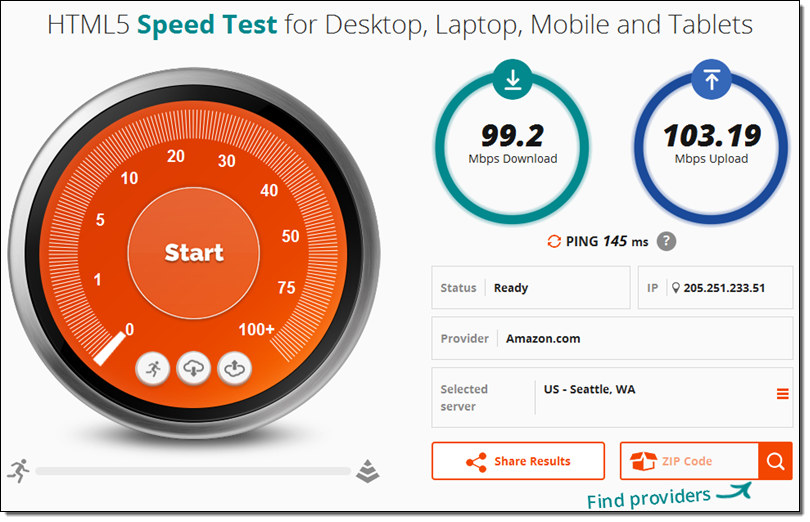
Sense of Permanence
We transitioned from our pilot WorkSpaces to our production environment late last year and are now provisioning WorkSpaces for many members of the AWS team. My WorkSpace is now my portable desktop.
After having used WorkSpaces for well over a year, I have to report that the biggest difference between it and a local environment isn't technical. Instead, it simply feels different (and better). There's a strong sense of permanence-my WorkSpace is my environment, regardless of where I happen to be. When I log in, my environment is always as I left it. I don't have to wait for email to sync or patches to install, as I did when I would open up my laptop after it had been off for a week or two.
Now With Tagging
As enterprises continue to evaluate, adopt, and deploy WorkSpaces in large numbers, they have asked us for the ability to track usage for cost allocation purposes. In many cases they would like to see which WorkSpaces are being used by each department and/or project. Today we are launching support for tagging of WorkSpaces. The WorkSpaces administrator can now assign up to 10 tags (key/value pairs) to each WorkSpace using the AWS Management Console, AWS Command Line Interface (CLI), or the WorkSpaces API. Once tagged, the costs are visible in the AWS Cost Allocation Report where they can be sliced and diced as needed for reporting purposes.
Here's how the WorkSpaces administrator can use the Console to manage the tags for a WorkSpace:
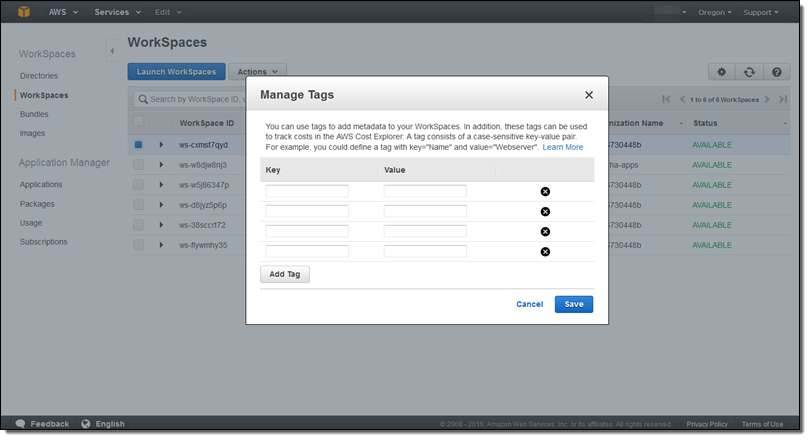
Tags are available today in all Regions where WorkSpaces is available: US East (Northern Virginia), US West (Oregon), Europe (Ireland), Asia Pacific (Singapore), Asia Pacific (Tokyo), and Asia Pacific (Sydney).
Learning More
If you have found my journey compelling and would like to learn more, here are some resources to get you started:
- Amazon WorkSpaces home page – Complete technical and pricing information.
- Amazon WorkSpaces Testimonials – Learn how Yamaha, Endemol Shine Nederland, and the Louisiana Department of Corrections are using WorkSpaces.
- Deploying Amazon WorkSpaces at Scale with Johnson & Johnson – A detailed presentation from one of our enterprise customers.
- How Amazon.com is Moving to Amazon WorkSpaces – A detailed recounting of our journey, including a lot of information on how we decided on our networking configuration. I have a brief appearance at the end as the “customer.”
- AHEAD Desktop As a Service – Learn how AWS Partner AHEAD is delivering Desktops as a Service (DaaS) using WorkSpaces. You can also register and watch their recorded webinar.
Request a Demo
If you and your organization could benefit from Amazon WorkSpaces and would like to learn more, please get in touch with our team at workspaces-feedback@amazon.com.
Jeff;



